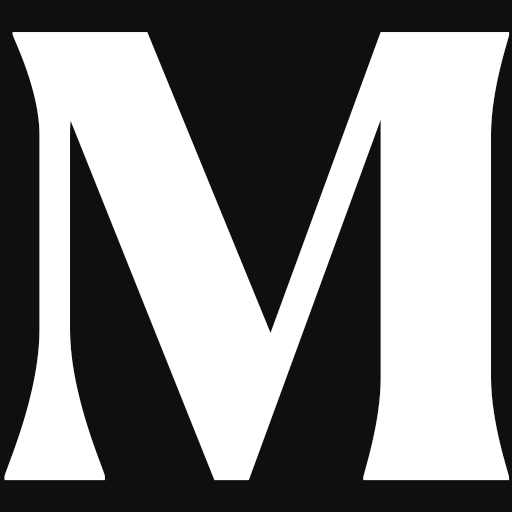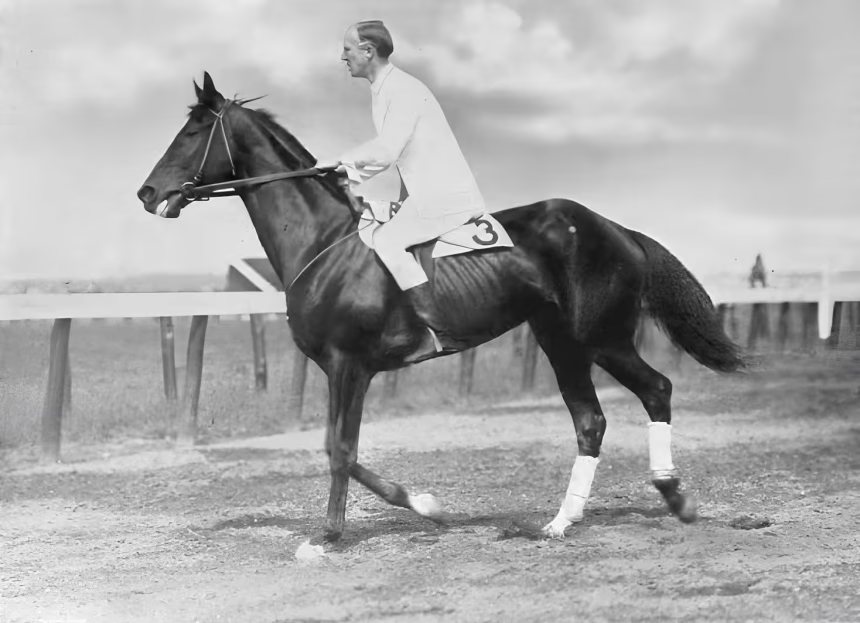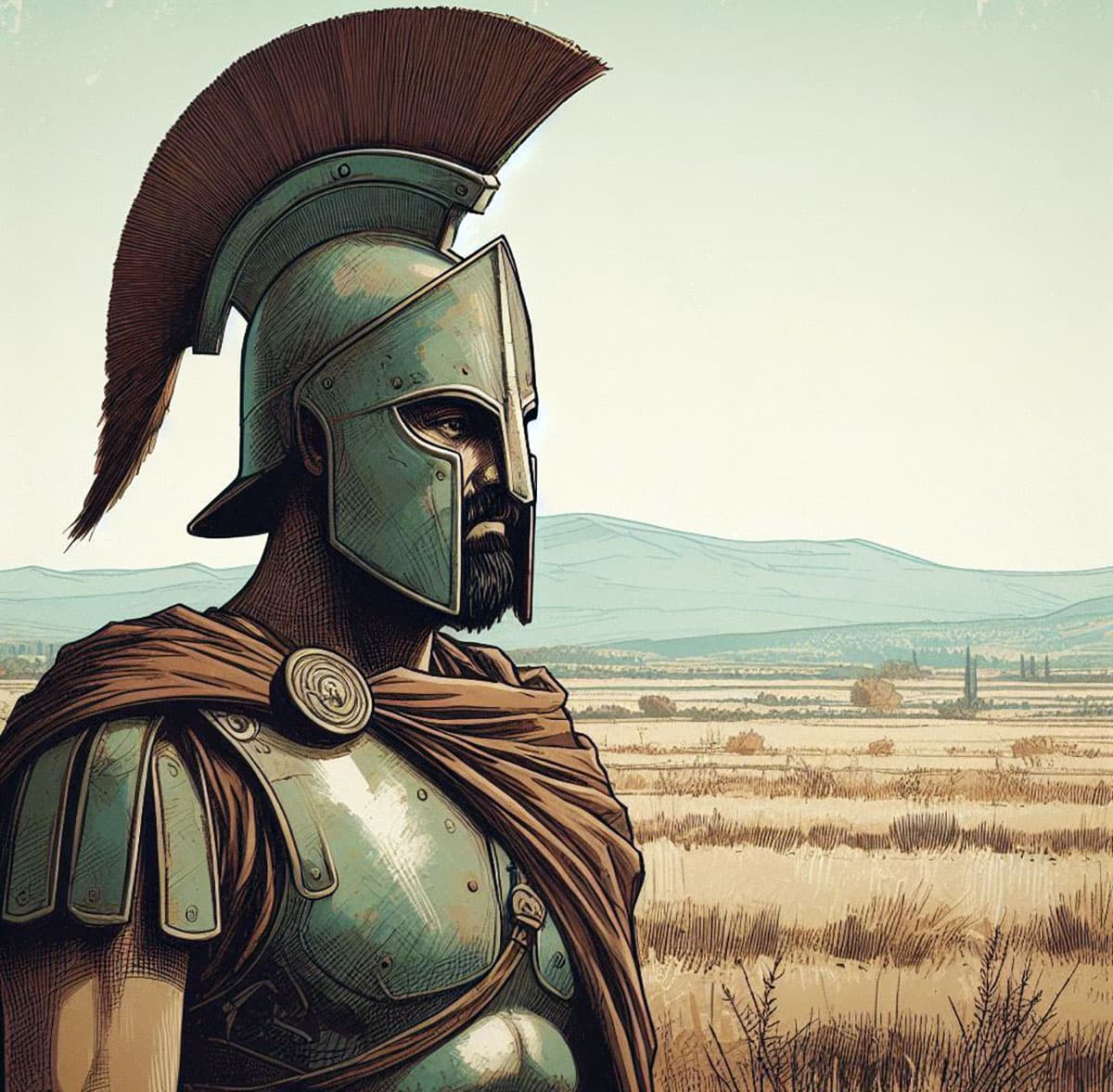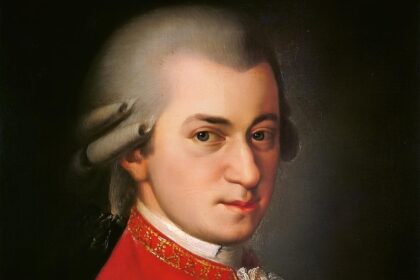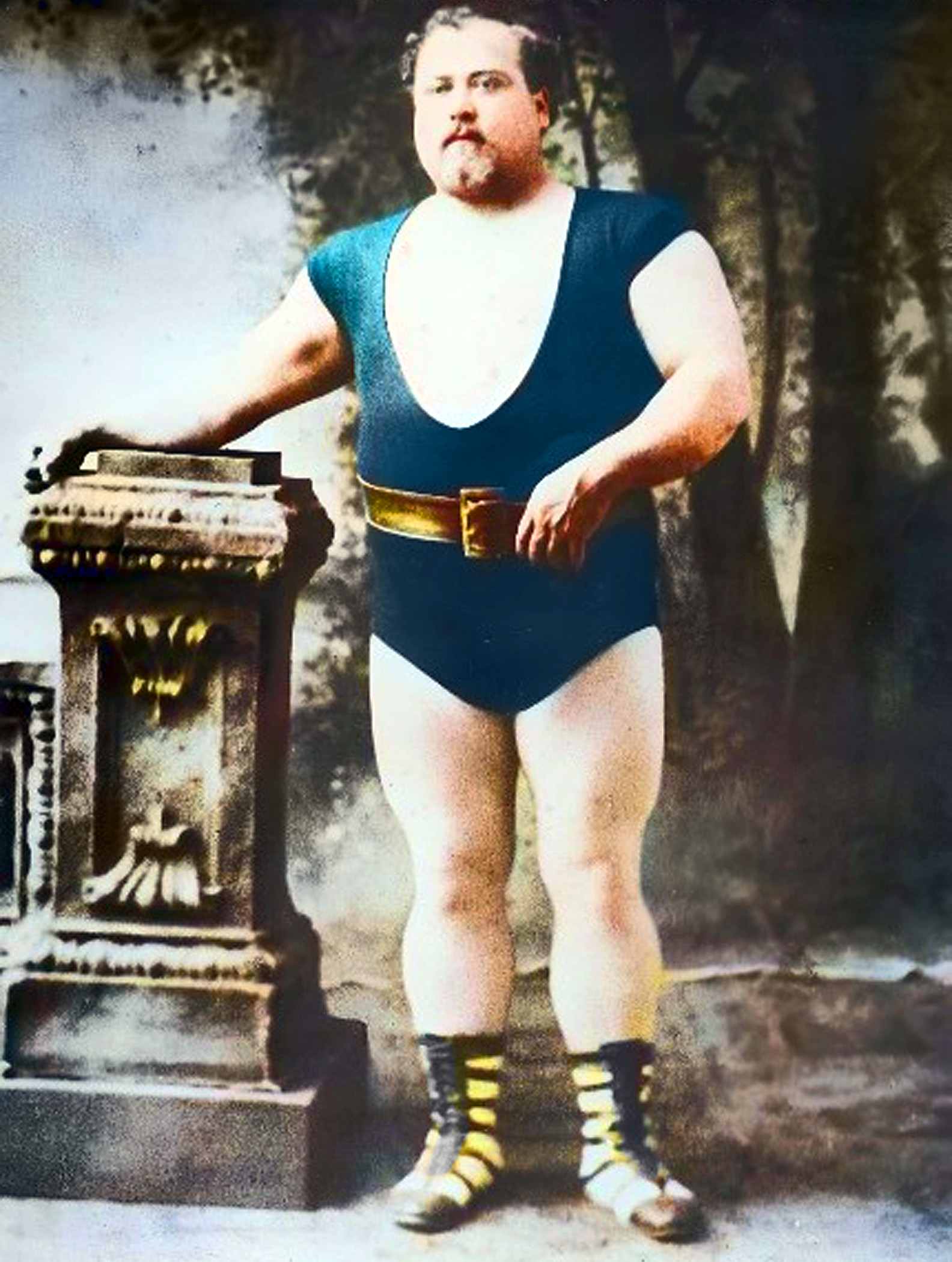“We have the best food, the best weapons, and the best fighting spirit. By God, I almost feel sorry for the poor bastards who have to face us!” George S. Patton pauses briefly as the cheers subside.
- Patton Must Wait for His Debut
- Fuel Is Patton’s Constant Headache
- Air Support Is Patton’s Secret Weapon
- Julius Caesar Shows Patton the Way
- Support Comes for Patton
- The Ardennes Offensive Shatters Plans
- Montgomery Gets All the Support
- Patton Disappears for a Day
- Patton ‘Beats’ Montgomery Again
- Hitler Feared Patton
- America’s Hero Never Returned Home
The general is in the middle of a rousing speech at a football stadium packed with 92,000 soldiers from the U.S. Third Army, whom he will soon lead into battle against the Germans in France.
“The goal of war is not for you to die for your country, but to make the other poor bastard die for his,” Patton declares.
Coming from a family with proud military traditions, he finally has his chance to distinguish himself. He expects his troops to view the war the same way.
“When you’re sitting with your grandchild on your knee 30 years from now, you won’t have to say that you were just shoveling shit in Louisiana during World War II.”
Patton Must Wait for His Debut
When the Allied invasion force crashes onto the beaches of Normandy in June 1944, Patton is not among them. His Third Army is to be deployed only after Field Marshal Montgomery has established a solid foothold in France.
The plan does not sit well with Patton. Montgomery is his greatest rival in the battle for glory and honor—Patton is still bitter that the Briton stole the spotlight a year and a half earlier during their joint campaign against Rommel in North Africa. Patton also believes Montgomery fights old-fashioned wars and has “no more tactical skill than a simple army cook.
”
When Supreme Allied Commander General Eisenhower finally sends the Third Army into action, the Germans feel the full force of Patton’s pent-up frustration and towering ambition. With unprecedented aggression, the Third Army assaults the German divisions rushing to Normandy to halt the invasion.
Patton’s style of warfare stands in stark contrast to other Allied commanders. He does not believe in first bombarding enemy territory with artillery before advancing. Instead, he strikes where the Germans least expect it. And once he breaches their defenses, he drives his tanks deep behind enemy lines, forcing the Germans to retreat or be encircled.
“I am not interested in receiving a bunch of reports saying we are holding our position. Let the Germans do that—we must keep moving forward. We are not interested in holding anything,” Patton drills into his officers.
And Patton’s tactics work. Within just 14 days, the Third Army crushes German resistance in Brittany and advances 250 km to Chartres—just an hour’s drive from Paris. Patton is on a personal victory march and sends Montgomery a terse telegram a few days later:
“Pissed in the Seine.”
In his usual vulgar fashion, Patton lets his rival know that the Third Army is far ahead of the cautious British forces and could enter Paris at any moment.
Fuel Is Patton’s Constant Headache

After political wrangling, however, the honor of liberating the French capital goes to the 2nd French Armored Division, part of the Third Army’s armored forces. The liberation costs Patton dearly, as he must spend the following days sharing his already limited supplies with the people of Paris, who desperately need food and fuel.
Fuel, in particular, is Patton’s never-ending concern. His tanks and armored vehicles consume at least 1.3 million liters of gasoline daily. But because the Third Army advances at an unprecedented pace, supply lines struggle to keep up. Additionally, the other Allied armies in northern France also require millions of liters of fuel each day, and supply units rarely manage to bring in enough for everyone.
Still, by the end of August, Patton captures Reims, Troyes, and Commercy in northeastern France. The attack on Commercy, in particular, unfolds just the way the armored general likes it:
“Colonel Clarke led a company of tanks across the bridge over the Moselle River and attacked four German cannons. He stormed in like a scene from a Western, firing everything he had. Exactly the way we’ve trained them,” Patton proudly tells war correspondents at his headquarters.
Air Support Is Patton’s Secret Weapon
Beyond the general’s boldness and tactical genius, the Third Army’s rapid advance is also due to air support. Patton has studied modern air warfare extensively and forms a close friendship with Brigadier General Otto Weyland. Weyland’s 19th Tactical Air Command plays a crucial role in maintaining the relentless offensive.
“During the day, fighters constantly patrolled ahead of General Patton’s tanks. The planes located enemy tanks, troops, and artillery and took them out before our tanks engaged. We simply threw out the rulebooks and made our own,” Weyland explains.
Other Allied generals still follow the standard procedure of calling in air support only when patrols spot a large enemy force beyond artillery range.
Patton is so thrilled with his exceptional air support that he ensures his praise reaches the pilots’ bases—along with crates of fine French wine, Luger pistols, and other souvenirs that the Third Army captures from the retreating German occupiers.
However, Patton’s insistence on rapid advances is not just about his burning ambition to go down in history as the greatest general of all time. There are also sound tactical reasons. A high-speed offensive leads to fewer casualties among the attacking force, as the enemy never gets the chance to establish an effective defense and is constantly pushed back.
Julius Caesar Shows Patton the Way
Patton possessed an exceptional ability to find suitable routes for his army to bypass natural obstacles. His secret lay in a book that accompanied him all the way through France: Julius Caesar’s nearly 2,000-year-old work The Gallic Wars. As Patton said with a crooked smile:
“That old bald Roman was one of the best in world history at reading the terrain. And valleys and rivers still lie where they did in Caesar’s day. So when I chase Nazis and come to a river or a ridge, I only need to ask myself where that Roman bastard crossed. As I always say: If it was good enough for Julius, it’s good enough for George.”
On September 17, Patton reached Metz. With its 43 defensive fortifications, the city was known as Western Europe’s strongest fortress, and the Germans were determined to fight to the last man. From Metz, the roads leading to the southern border of Luxembourg and the western border of Germany were easily defensible.
Speed and surprise attacks had been Patton’s strongest weapons so far, but now he suddenly had to adapt to fighting on a static front against an unyielding enemy. The battle turned into a disaster for the Third Army. At Metz, Patton wasted three months taking down fortress after fortress. 29,000 Americans were killed or wounded.
“Those despicable German bastards gave me my first bloody nose,” Patton wrote in his report to his superior, General Omar Bradley.
“I request a revenge attack from the air and hope you can get me the biggest and nastiest bombs so we can blow the fort to pieces and leave nothing but a hole in the ground.”
However, the Allies were facing supply shortages, and Patton did not get his massive air bombardment. Instead, he was harshly criticized for the unreasonably high casualty rate and eventually received a direct order from Eisenhower to encircle Metz with a smaller force and let his main force continue its advance into Germany.
Support Comes for Patton
Patton now began the push toward Germany’s western border, where the Siegfried Line posed the next major obstacle. The Germans called the defensive line the West Wall, and it was Patton’s task to break through it.
However, snow and cold put a damper on his plans. Weyland’s effective air support was also of no help, as pilots couldn’t see anything in a snowstorm.
Amidst all the frustration, Patton received a phone call that changed everything. The call came from Weyland, who had just attended a meeting with Eisenhower.
“George, I’ve just – on your behalf – committed the Third Army to one hell of a big operation,” Weyland told him.
“What are we doing?” Patton asked.
“We’re going to break through the Siegfried Line, head for Berlin, and win the war. You’ll have every aircraft in European airspace clearing the way for you.”
“Well, I’ll be damned,” replied a delighted Patton.
Finally, he was receiving the same support as Montgomery. Finally, he could operate freely and write his name in the history books alongside legendary generals like Napoleon and Caesar.
The Ardennes Offensive Shatters Plans
“Operation Tink” was immediately set in motion, and Weyland’s aircraft began the first tactical bombings of the Siegfried Line and the areas behind it. But on December 16, Nazi Germany suddenly launched a counterattack, catching the Americans off guard in the Ardennes—the hilly forest region where Luxembourg, Belgium, and Germany meet.
Patton had to scrap all his plans and race north. 200,000 German troops threatened to push back the U.S. Ninth and First Armies, capture the port city of Antwerp, and cut off supply lines to the Allied forces.
During a crisis meeting on December 19 with Eisenhower, Bradley, and all the other top generals, Patton promised that he could deploy six divisions—over 60,000 men—in an attack against the Germans within three days.
The other generals laughed, as Patton’s Third Army was far from the Ardennes, and his war machine was currently set on attacking eastward. But Patton kept his word. With one of the most impressive logistical achievements in military history, the Third Army changed direction and reached the Ardennes in record time.
Bad weather, confusion, and fanatically fighting German troops made the Battle of the Bulge long and bloody. Every morning, Patton got up early and drove out to units engaged in direct combat with German forces. His presence helped boost morale and secure crucial breakthroughs.
Unlike many of his colleagues, Patton made a point of following advice from U.S. Civil War hero General Sherman, who wrote in his memoirs:
A leader must be at the front with his troops. The brain behind the operation should always be visible, and his energy must be felt.
Montgomery Gets All the Support
Finally, at the end of January, the last remnants of the German offensive are defeated, and Patton can once again look eastward. He hopes that “Operation Tink” will be revived but is sorely disappointed. On January 29, 1945, politicians decide that Montgomery’s large-scale offensive from Holland into Adolf Hitler’s war industry in the Ruhr district will have the highest priority and receive all necessary resources.
Montgomery immediately takes control of the entire American 9th Army and also has his eyes on Patton’s 3rd Army, though Patton only has to give up two divisions. Still, Patton is furious. The Americans are supplying all the weapons, fuel, and most of the troops, while the British are taking all the glory.
The Americans are not entirely sidelined, however. Eisenhower stipulates that the American 1st, 3rd, and 15th Armies will advance towards the Rhine on a broad front from Luxembourg to Switzerland. These three armies are to draw German forces away from Montgomery’s sector.
Supplies remain scarce, so Patton is told that he can count on fuel and ammunition only as long as Montgomery’s offensive has not yet crossed the Rhine. That means he must move quickly—just the way he likes it.
Patton Disappears for a Day
The city of Trier is Patton’s first objective, but to capture the strategically important city by the Moselle River, he needs an additional tank division. Eisenhower agrees to lend it for 48 hours. If Trier is not taken within two days, Patton must return the tanks so they can be reassigned to a reserve force protecting Montgomery from further German counterattacks.
However, mines and fierce resistance slow Patton’s advance, and by nightfall on the second day, the 48 hours are up. His troops can still only glimpse the outskirts of Trier. Patton then orders his men to cut the communication line to Eisenhower and ignore all messages from him. He then launches one last intensive attack. Less than a day later, a courier delivers a lightning telegram from Eisenhower:
Trier requires four full divisions to capture. You only have two. Bypass the city and continue into Germany.
Patton takes out his pencil and writes on the telegram:
Captured Trier with two divisions. What should I do? Give the city back to the Germans?
From Trier, Patton continues toward Koblenz and then swings down along the Rhine. He is searching for a place to cross the wide river, which for centuries has served as a natural defense, protecting Germany from foreign invasions. The Rhine is the last serious obstacle that could stop the Allied advance.
Patton ‘Beats’ Montgomery Again
As Patton storms ahead, Montgomery follows his usual tactic of bombarding the selected invasion area with heavy artillery. The campaign has been ongoing for almost a month. The enemy knows where the attack will come but can do nothing because the overwhelming force is too great.
Churchill even records a victory speech in advance to honor Montgomery. When the British cross the river, it will be broadcast on the radio. In the speech, Churchill praises his field marshal for carrying out the first successful river assault in world history.
At dawn on March 22—just hours before Montgomery is scheduled to cross the river—Patton calls his superior, General Bradley:
“Bradley, don’t tell anyone. I’ve made it across,” Patton says.
“You mean the Rhine?”
“Yep. I snuck an entire division over last night. But there are so few Prussians around that they haven’t noticed yet. Let’s keep it a secret for a little while longer,” Patton says before hanging up.
Once again, he has succeeded by following his own motto:
“The place where the enemy thinks the river is impossible to cross is usually the least defended.”
Later that day, Patton calls again:
“For God’s sake, tell the whole world that we’ve crossed the Rhine. We shot down 33 planes when they tried to destroy our pontoon bridges. The whole world needs to know that the 3rd Army got across before Monty even got started,” Patton shouts excitedly.
With a barely concealed jab at Montgomery’s upcoming attack, Bradley immediately issues a communiqué to the world press:
“Without support from air bombardments, smoke screens, artillery barrages, or parachute drops, the U.S. 3rd Army today, March 22 at 22:00, crossed the Rhine.”
In reality, the 3rd Army is not the first to cross the Rhine. A few days earlier, the U.S. 1st Army had captured a bridge over the Rhine that the Germans failed to blow up. Still, Patton is bursting with pride at having once again outpaced Montgomery.
Hitler Feared Patton
By March 23, the Allies had established themselves on the eastern side of the Rhine. Germany was as good as defeated. Patton had played a crucial role in the inevitable German collapse—so crucial that Hitler declared, “That crazy cowboy general is the most dangerous man the Allies have.”
In Germany, Patton enforced a strict ban on any sexual contact with German women. However, when he sent the 3rd Army into Czechoslovakia, he came up with a battle cry to motivate his war-weary troops to fight again:
“Onward to Czechoslovakia and fraternization.”
Since the Czechs were Allied supporters, Patton’s soldiers were allowed to get close to the local women. As Patton remarked to General Bradley:
“How the hell do you stop an army with a battle cry like that?”
America’s Hero Never Returned Home
Shortly after the war ended, Patton briefly visited the United States and was celebrated with victory parades in Boston and Los Angeles. It was the last time he set foot on American soil.
Soon after, he was sent back to Europe as the commander of U.S. occupation forces in southern Germany. While on his way to a pheasant hunt in Luxembourg, Patton’s car rear-ended a truck that had suddenly turned.
Everyone else in the car escaped unharmed, but Patton struck his head so hard that he broke his neck. Two weeks later, on December 21, 1945, he died of a blood clot in the hospital. As per his own wishes, he was buried alongside his men at the military cemetery in Hamm, Luxembourg.
His simple white cross still stands today among 9,000 other fallen soldiers from the 3rd Army. Only four stars at the top of the cross draw attention to the inscription:
“Geo. S. Patton Jr. – General 3rd Army.”

